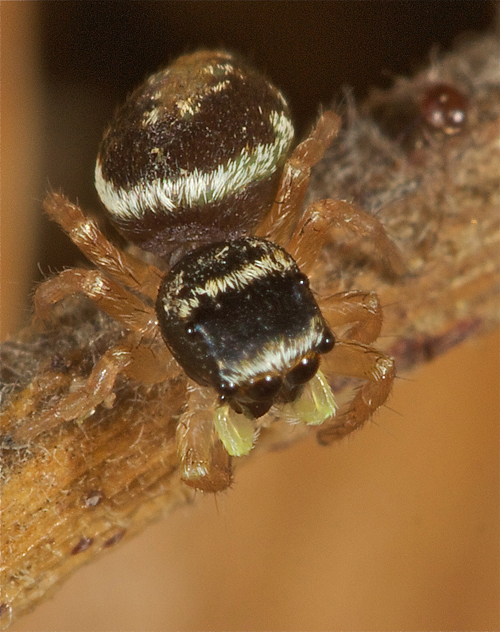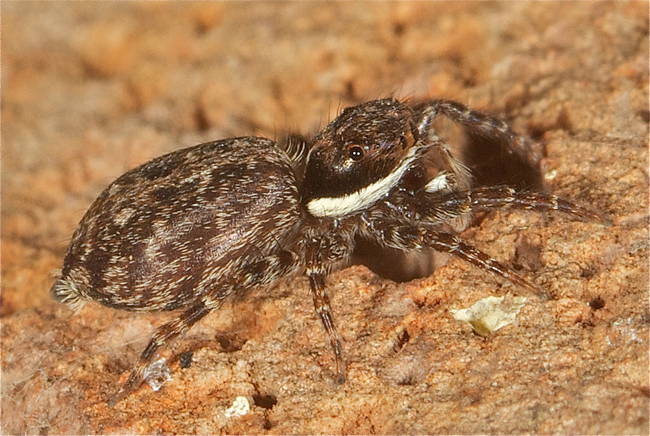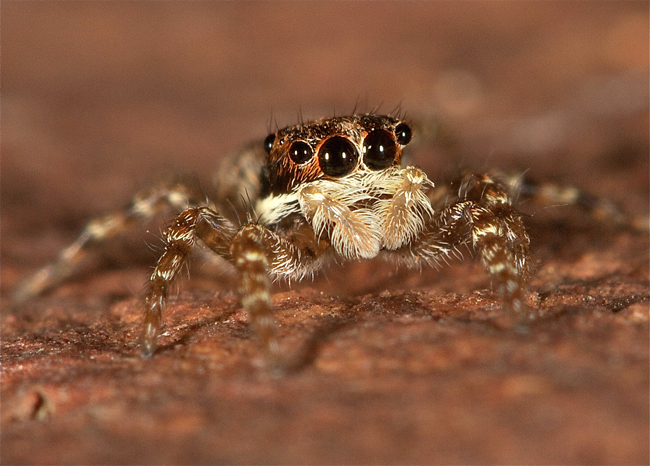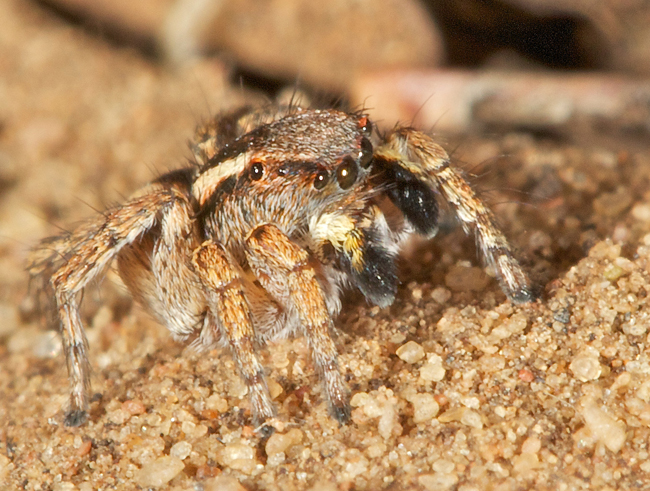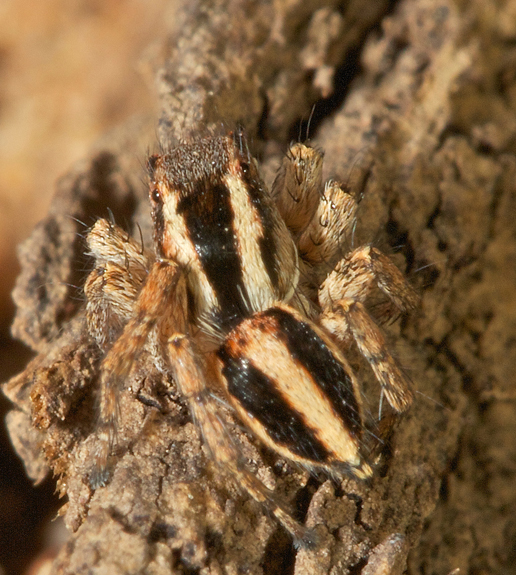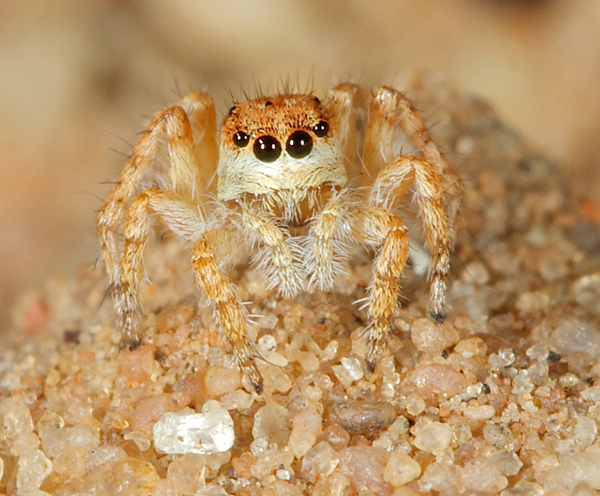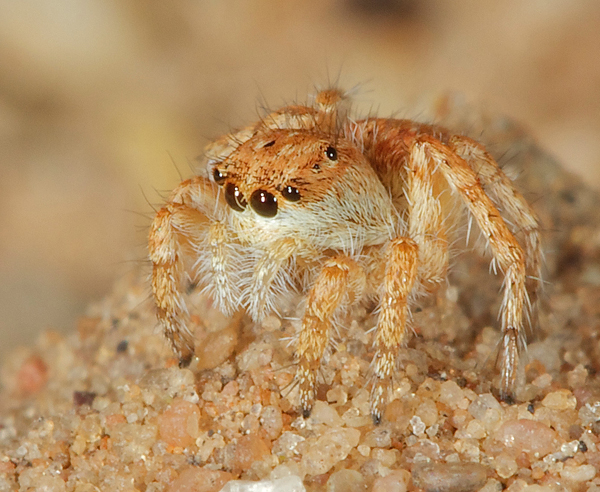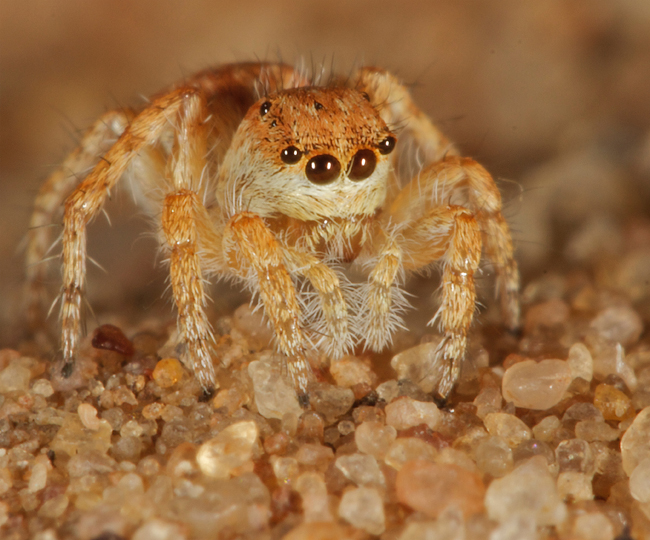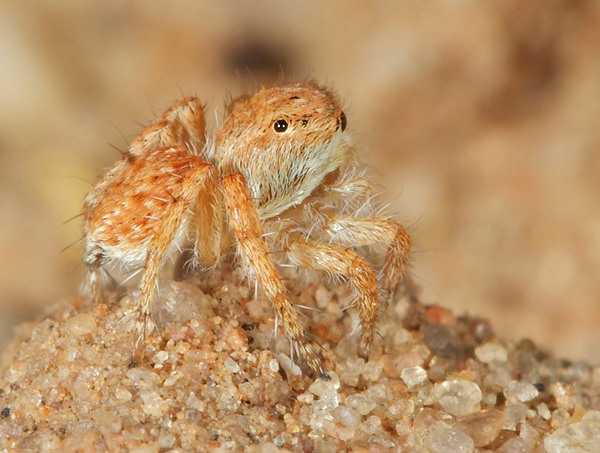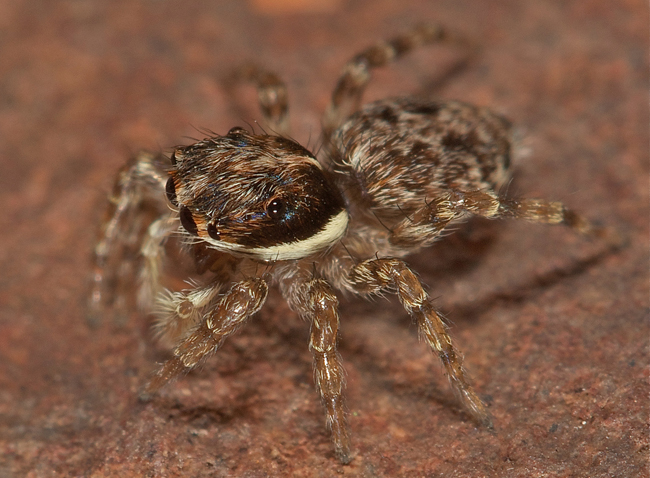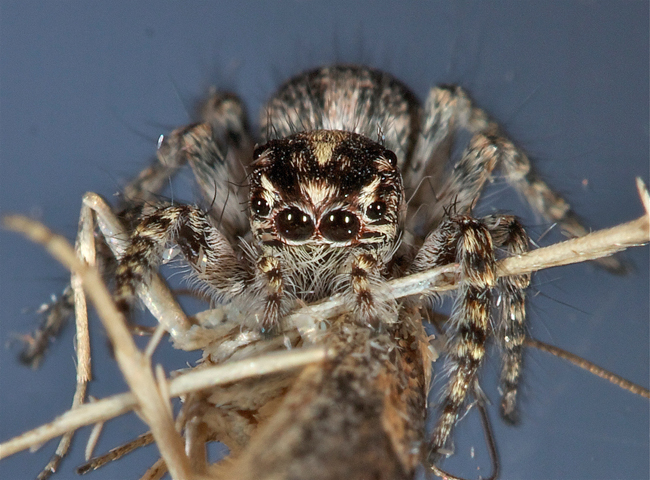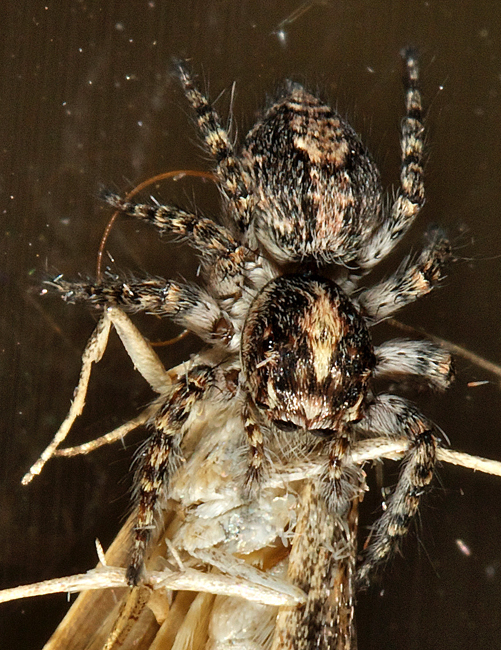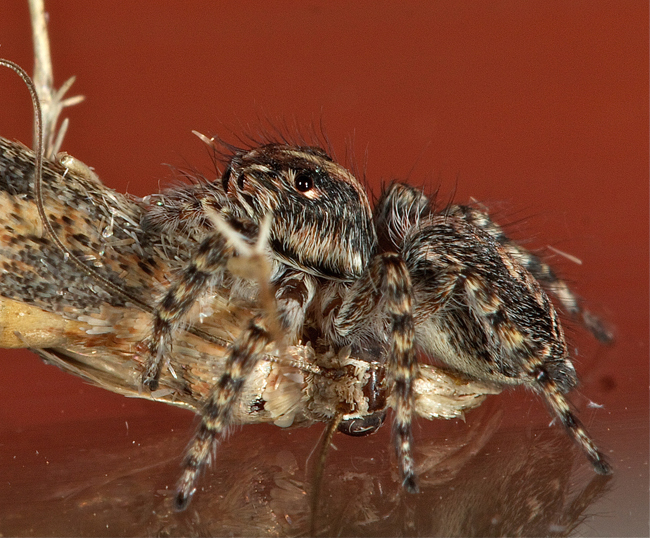Jumping Spider Manzuma sp.
Family: Salticidae
Tribe: Aelurillini (Simon, 1901) Subtribe: Aelurillina (Simon, 1901)
Genus Manzuma gen. nov. (new genus)
To date, the genus
Manzuma is the first and the only endemic genus of aelurillines described from the Afrotropical Region. Although only seven species are known, the genus is likely to contain more undescribed species from different African regions, and its current species richness is underestimated. Underestimation of aelurilline diversity is not isolated to
Manzuma, but rather throughout aelurillines. There are undescribed endemic aelurilline genera from Africa awaiting description, with some of their species being mistakenly assigned to such genera as
Aelurillus, Langona, Langelurillus and
Phlegra (unpubl. data).

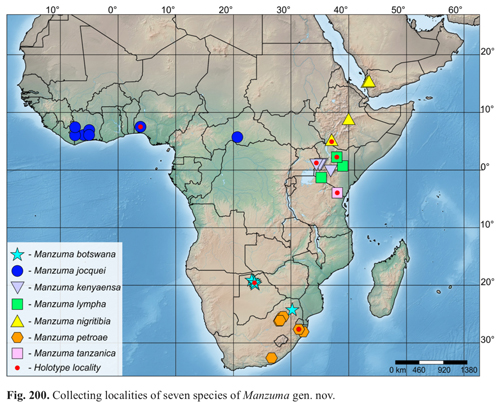
The currently-known world Aelurillina fauna contains 291 species in ten genera, including the
Manzuma. The Afrotropical Region (sensu Dippenaar-Schoeman & Jocqué 1997) includes 125 Aelurillina species in seven genera, which is almost 43 % of the world diversity of Aelurillina.
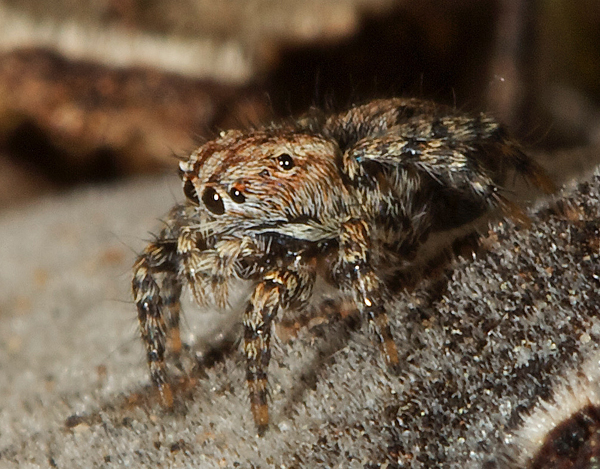
Kgalagadi TP
by ExF (female)
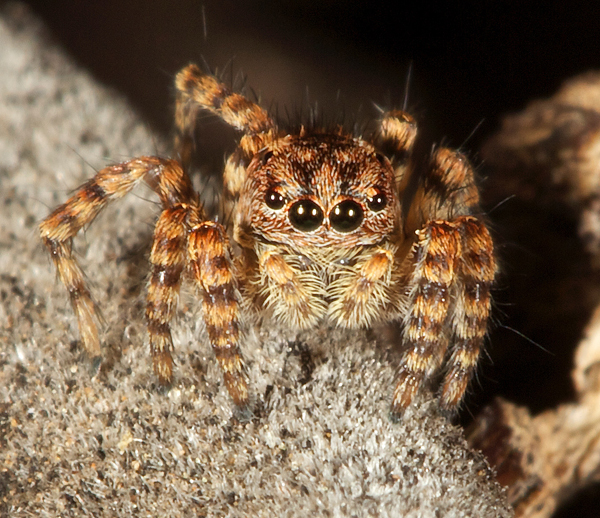
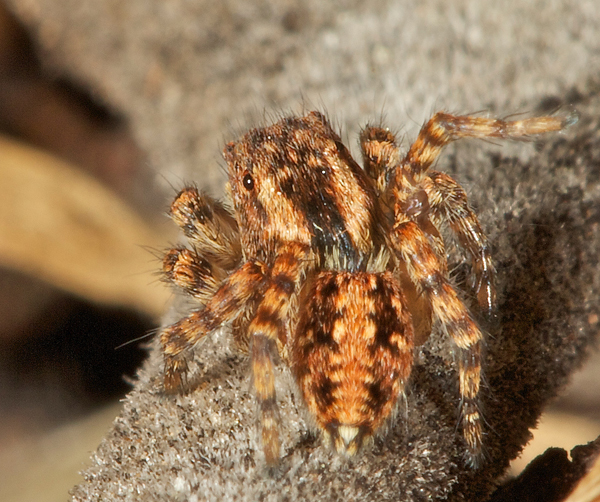
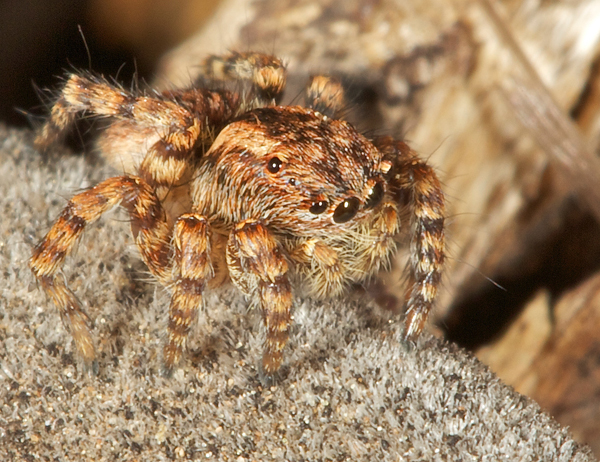
Kgalagadi TP
by ExF (female)
Description
Small spiders, ranging in body length from 2.80 to 3.75 mm in males and 3.80 to 4.60 mm in females. Sexes similar in general body shape. Males usually smaller and brighter coloured.
CARAPACE: Rather high, highest point located in PLE or just behind PLE. Color pattern of both sexes usually with two longitudinal stripes running along the ALE–PLE lines (poorly visible or invisible in some females); fovea present and situated between PLEs; the anterior part of the eye field is covered with short erect bristles similar to the ‘rod-hairs’.

CLYPEUS: Medium to high, ranging between 50–83% of the AME diameter in males and 44–63% in females.
CHELICERAE: Medium length, vertical and of usual shape; promargin with two small teeth, basally fused together, retromargin with one tooth.
ENDITES: Subparallel, of usual shape, with pale yellow to white apices; in males of all species with small retrolateral “cavity” (EnC) at the base of endites, while in females this character is absent.
STERNUM: Ovoid, longer than wide.
PEDICEL: Short, in live specimens not visible in dorsal view.
ABDOMEN: Elongate, without scutum; colour markings simple – with white median longitudinal stripe in males and usually with two median longitudinal lines of white spots in females.
BOOK-LUNG COVERS: Not sclerotized.
SPINNERETS: Medium in size.
LEGS: Subequal in length, with femora of legs III longer than others; female metatarsi I without retrolateral spines; in four species (M. jocquei, M. kenyaensis, M. nigritibia and M. petroae gen. et sp. nov.) femora I of male with long white or yellow-white hairs prolaterally; tarsal claws narrow, on legs I–II of male with 7–8 teeth prolaterally and 4–5 retrolaterally, on legs I–II of female with 1 or 3–4 small teeth pro- and retrolaterally. Leg formula: III/IV/II/I or III/IV/I/II in both sexes.
FEMALE PALP: General form, without an apical claw.
MALE PALP: Femora of usual form, densely covered with long white hairs; tibia short, with ventral short membranous apophysis and a well-developed sclerotized ventral apophysis and bulge- like dorsal apophysis, in M. kenyaensis gen. et comb. nov. with dorsal bulge. Cymbium oval, without apical claw; cymbial apex densely covered with short erect hairs and poorly-marked ventral groove. Basal haematodocha is well-developed and subtegulum is simple, visible in an expanded palp only. Tegulum is narrow and elongated, with small apical tegular projection, in
M. lympha and
M. nigritibia poorly visible. The distal haematodocha is well-developed and the salticid radix has a small and rounded proximal projection.
Distribution
Afrotropical Region (sensu Dippenaar-Schoeman & Jocqué 1997).
Natural history
Like other members of the Aelurillina (Prószyński 2017; Logunov & Azarkina 2018), members of
Manzuma are ground-dwellers, occurring in different biotopes with high insulation.
Remarks
Females of six
Manzuma species show close similarity in coloration and great intraspecific variability in the structure of copulatory organs and are almost indistinguishable from each other.
Females of
M. botswana gen. et sp. nov.,
M. kenyaensis gen. et comb. nov. and
M. petroae gen. et sp. nov. have a short white stripe on the eye field just behind the AMEs and cheeks with two narrow lines of whitish dense scales running from AMEs to the sides of the carapace. Females of
M. jocquei, M. lympha and
M. nigritibia are almost indistinguishable except that
M. jocquei and
M. lympha have the cephalic part of the carapace slightly narrower, than that of
M. nigritibia.
https://www.researchgate.net/publicatio ... f/download
